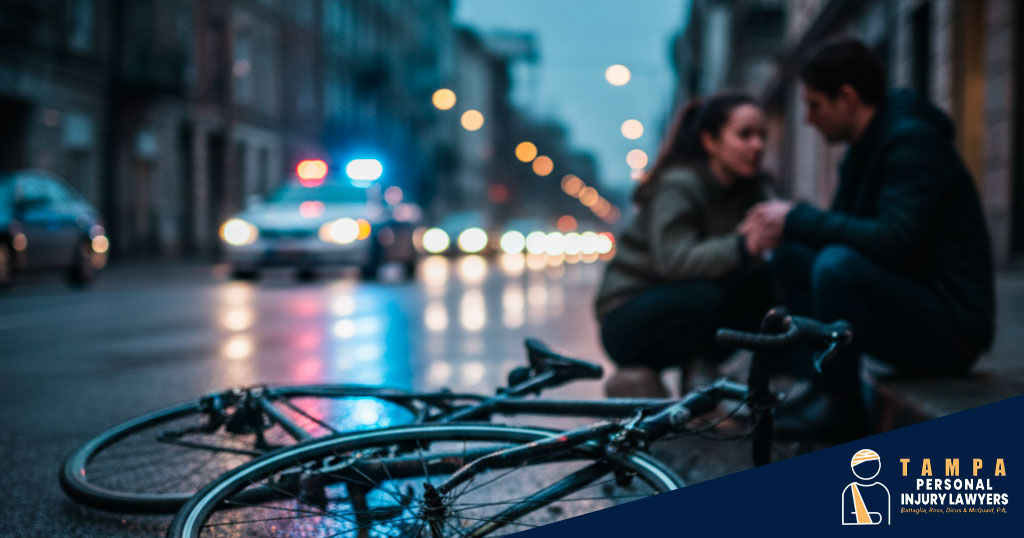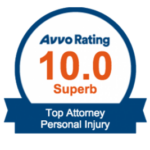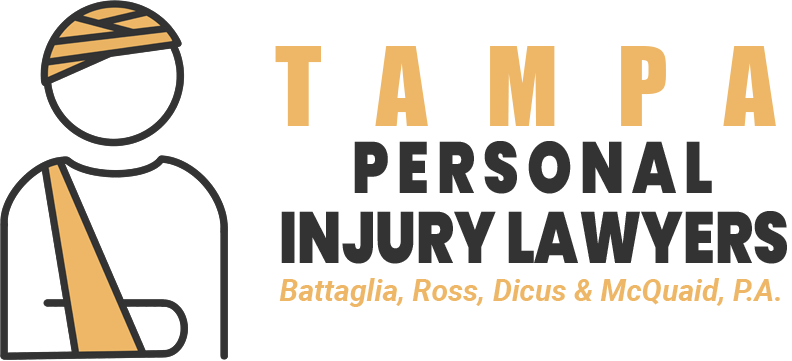When you’re cycling in the Sunshine State, avoiding bicycle accidents is about more than just luck. While Florida is tragically known for having one of the nation’s highest bicycle fatality rates, the number of injuries is far higher. In fact, preliminary data from the Florida Department of Highway Safety and Motor Vehicles shows there were over 7,000 bicycle crashes in the first nine months of 2025 alone. This staggering number highlights the very real dangers cyclists face daily. With risks like distracted drivers and heavy city traffic, staying safe on a bike in Florida requires more than caution; it demands proactive measures.
This guide will provide essential bicycle safety tips and practical advice to avoid bicycle accidents in Florida. It will cover everything from the gear you need, traffic laws you must know, and defensive riding techniques that can help you stay safe on every journey.
Table of Contents
ToggleUnderstanding the Risks: Common Causes of Bicycle Accidents in Florida
The high number of bicycle crashes in Florida is no accident; they are the result of common and predictable behaviors on the road. Understanding these risks is the first step toward staying safe and learning how to avoid bicycle accidents.
Driver-Related Dangers Many accidents happen because drivers simply do not see cyclists or are not paying attention. Key dangers include:
- Failure to Yield: Drivers often fail to recognize a cyclist’s right-of-way, leading to “left cross” and “right hook” accidents.
- Distracted Driving: A driver using a cell phone or not paying attention can easily cause a rear-end or sideswipe collision.
- Dooring: Car occupants opening doors without checking for approaching cyclists is a common cause of crashes.
Road-Related Hazards Florida’s road infrastructure also plays a significant role in accidents.
- Dangerous Intersections: Inadequate bike lanes and poor road design in high-traffic areas create a hazardous environment.
- Road Conditions: Florida’s frequent rain can hide potholes, while debris from fallen palm leaves or construction can cause a sudden loss of control.
Your Essential Safety Toolkit
Protecting yourself and learning how to avoid bicycle accidents starts with having the right gear and a clear understanding of the law. In Florida, a bicycle is considered a legal vehicle, giving you the same rights and responsibilities as motorists.
Mandatory Equipment and Legal Requirements
- Helmets: Florida law requires helmets for all riders under 16. While not legally required for adults, a helmet is the single most important piece of safety equipment you can wear, reducing the risk of a head injury by up to 85 percent.
- Lights and Reflectors: For riding between sunset and sunrise, you must have a white front light visible from 500 feet and a red rear light and reflector visible from 600 feet.
- Brakes: Your bicycle must have a brake system that can stop within 25 feet when traveling at 10 mph.
Be Seen, Be Safe
Visibility is your best defense. In addition to mandatory lights, wear bright, high-visibility clothing during the day. Consider adding flashing lights to your helmet or backpack for extra visibility.
Pre-Ride Safety Check
Before every ride, perform a quick A-B-C safety check to prevent a mechanical failure:
- A is for Air: Check your tire pressure.
- B is for Brakes: Squeeze your levers to ensure they work.
- C is for Chain: Make sure your chain is clean and lubricated.
Legal Riding Locations
- Roads: You must ride with the flow of traffic, obey all traffic signals, and use a designated bike lane when available.
- Sidewalks: Florida law allows sidewalk cycling unless local signage prohibits it. You must always yield to pedestrians.
Best Practices for Avoiding Bicycle Accidents on Florida Roads
Safe cycling is a proactive skill. By adopting a defensive mindset, you can anticipate hazards, protect yourself, and help to avoid bicycle accidents.
Mastering Defensive Riding
- Anticipate Driver Behavior: Always assume drivers do not see you. Watch for signs of distraction, sudden lane changes, or vehicles preparing to turn. Make eye contact at intersections to ensure they’ve seen you.
- Maintain a Safe Buffer: Keep at least three feet away from parked cars to prevent “dooring” accidents.
- Ride Predictably: Hold a steady lane position and ride in a straight line so drivers can gauge a safe passing distance. In heavy traffic, ride single-file.
Signaling and Traffic Rules
Florida law treats bicycles as vehicles, so following the rules of the road not only keeps you safe but reinforces your rights as a cyclist.
- Hand Signals: Use clear hand signals for every turn and lane change.
- Obey the Law: Obey all traffic signals and stop signs.
- Yield: Yield to pedestrians at crosswalks and respect their right of way.
Smart Route Selection
Choosing the right route can make cycling significantly safer and help you to avoid bicycle accidents. While designated trails like the Pinellas Trail in St. Petersburg or Miami’s Rickenbacker Causeway offer safer alternatives to busy streets, cyclists should still ride defensively. These trails are often shared with pedestrians, pets, and other riders, and intersections with road traffic remain high-risk. Whenever possible, plan your ride to minimize exposure to high-speed roads and distracted drivers.
- Use bike lanes whenever available.
- Choose quieter streets or shared-use paths to avoid heavy traffic.
- Avoid rush hour on major arterial roads.
- Minimize left turns across traffic whenever possible.
Stay Aware of Your Surroundings
Florida’s roads have their own unique dangers. Staying alert is a full-time job for every cyclist.
- Scan the Road Surface: Constantly scan for hazards like potholes, debris, and standing water, which can be hidden by Florida’s frequent rain.
- Beware of Weather: Florida’s weather changes quickly. Be prepared to find a safe place to wait out a sudden storm, as heavy rain reduces visibility and makes roads slippery.
For more information on national bicycle safety guidelines and best practices, you can review the official guide from the National Highway Traffic Safety Administration (NHTSA).
What To Do After a Bicycle Accident
A bicycle accident can be a shocking and confusing event. Your actions immediately following a crash are critical for your health and legal rights.
Prioritize Your Safety and Health
First, move yourself and your bike off the road and out of traffic to prevent a second accident. Call 911 if you have any pain or visible injuries, and seek medical attention as soon as possible, as some symptoms may not appear right away. A police report is required in Florida for accidents involving injuries, death, or property damage over $500.
Document and Gather Information
The information you collect at the scene is vital for your insurance claim and any legal action.
- Take Photos: Use your phone to photograph your bike, any vehicle damage, your injuries, and the accident scene.
- Collect Information: Get the other driver’s name, phone number, and insurance details. Never admit fault.
- Find Witnesses: Ask witnesses for their contact information. Their account can be invaluable.
- Get a Police Report: Record the responding officer’s name, badge number, and the case number.
Seek Immediate Medical Care
Even if you feel fine, get a medical evaluation. Symptoms of a serious injury can take time to appear. Under Florida law, you must seek medical treatment within 14 days of an accident to be eligible for Personal Injury Protection (PIP) benefits. Missing this deadline could cost you your right to compensation.
Your Legal Rights After a Bicycle Accident
Knowing your legal rights is a key part of protecting yourself. If a driver’s negligence causes your crash, you have the right to seek compensation for your injuries and losses.
Be Cautious with Other Insurance Companies
The other driver’s insurance company may contact you after a crash. Be very careful about what you say. It is always wise to consult with a lawyer before giving a recorded statement or accepting a settlement. Insurance adjusters are trained to minimize payouts, and a quick offer often fails to cover long-term medical needs.
What You Can Claim
You can claim compensation for more than just your medical bills. Your compensation rights can include:
- Medical expenses and rehabilitation costs.
- Income you lost while you recovered.
- The cost to repair or replace your bicycle.
- Damages for pain and suffering.
Protect Your Claim
The documentation you collected is essential. You must keep all medical records, repair estimates, and correspondence with insurance companies. Never sign releases or accept settlements without understanding their full implications. Insurance companies employ teams to reduce the value of claims, and you deserve fair compensation for your injuries and losses.
For a full guide on what information you need and how to build a solid case, read our article on “How to Build a Strong Personal Injury Claim“.
Contact a Florida Bicycle Accident Lawyer Today
In Florida’s challenging traffic environment, even the most careful cyclists can be involved in a crash. If you’ve been injured in a bicycle accident, it’s crucial to protect your rights. The complexities of Florida’s cycling laws and the tactics insurance companies use to minimize payouts require a trusted and experienced legal partner.
Our award-winning team of attorneys has a proven track record and extensive resources to help you secure the compensation you deserve. We understand Florida’s unique accident statistics and what it takes to fight for cyclists. Don’t let a serious injury prevent you from getting the justice you deserve.
Take the first step by calling our Tampa office now to schedule free consultation. Our skilled Tampa Bike Accident Attorneys can help you secure the full compensation you are entitled to.
FAQs (Frequently Asked Questions)
What are the main causes of bicycle accidents in Florida and how can cyclists work to avoid bicycle accidents?
The most common causes of bicycle accidents in Florida are often due to driver negligence. Common factors include distracted driving, failing to yield to cyclists, making unsafe turns, and rear-ending cyclists. By understanding these risks, cyclists can apply defensive riding techniques to better avoid bicycle accidents.
What are the helmet laws and safety equipment requirements for cyclists in Florida?
Florida law requires that all cyclists under the age of 16 wear a helmet. While there is no legal requirement for adults, wearing one is strongly recommended. Additionally, cyclists must have a front light and a rear light for riding after dark.
Where is it legal to ride a bicycle in Florida?
Cyclists are generally required to ride with the flow of traffic on the road and must obey all traffic signals. Sidewalk riding is often legal, but it is best to check for local ordinances and to always yield to pedestrians.
What should I do immediately after a bicycle accident?
Your first priority is safety. If you can, get yourself and your bike off the road to a safe location. Call 911 for emergency services and to file a police report. It is also critical to document the scene with photos and to get the other driver’s information.
What legal rights do I have after a bicycle accident?
If you were injured in a bicycle crash due to another party’s negligence, you have the right to seek compensation for your medical bills, lost wages, and other damages. It is important to know your rights and be cautious with insurance companies.






























